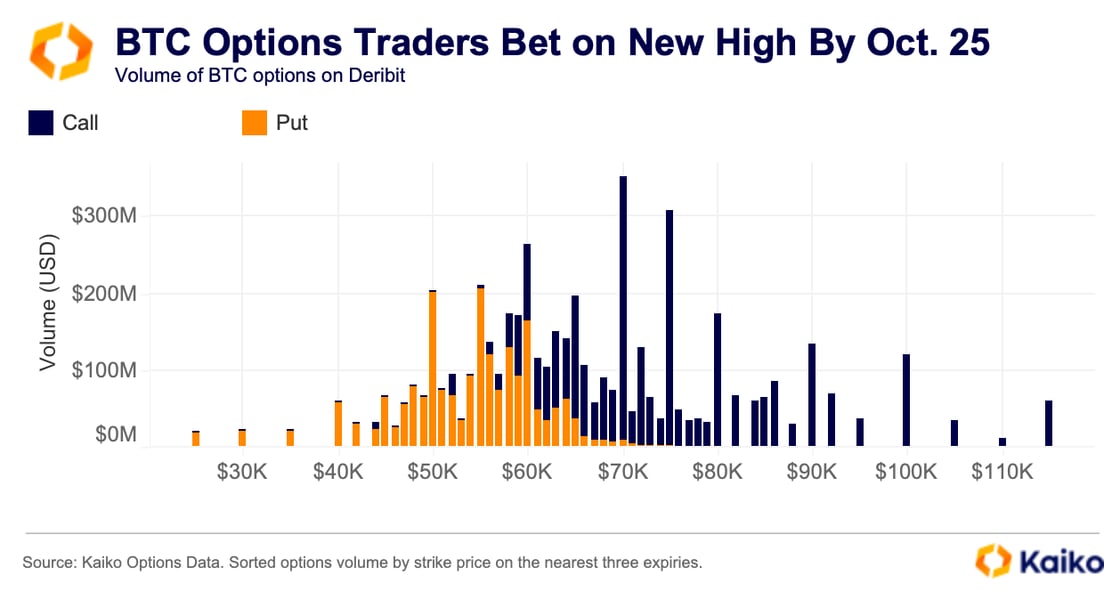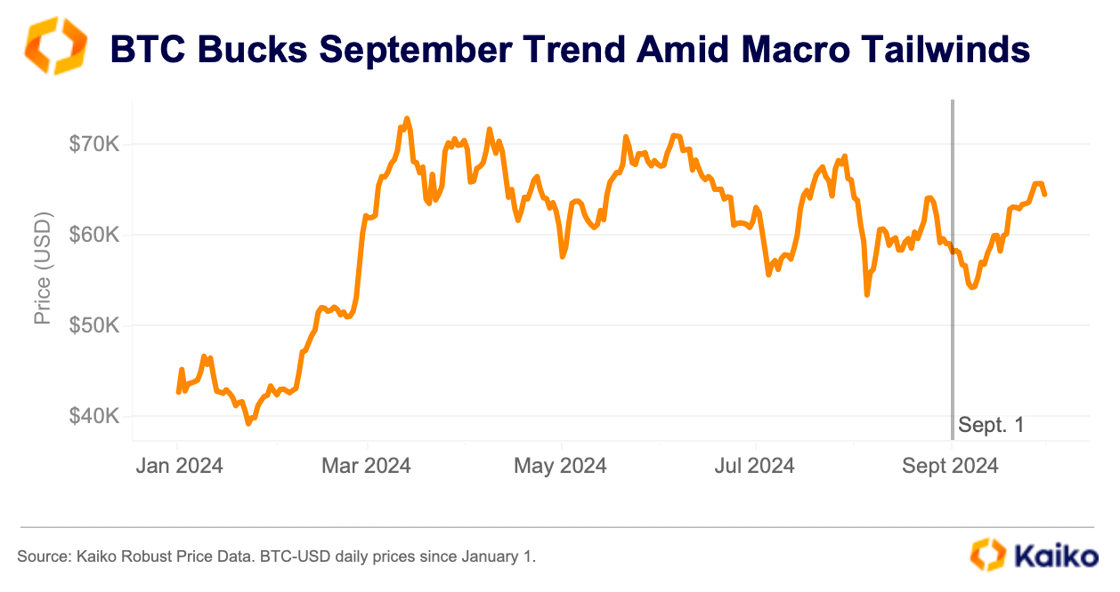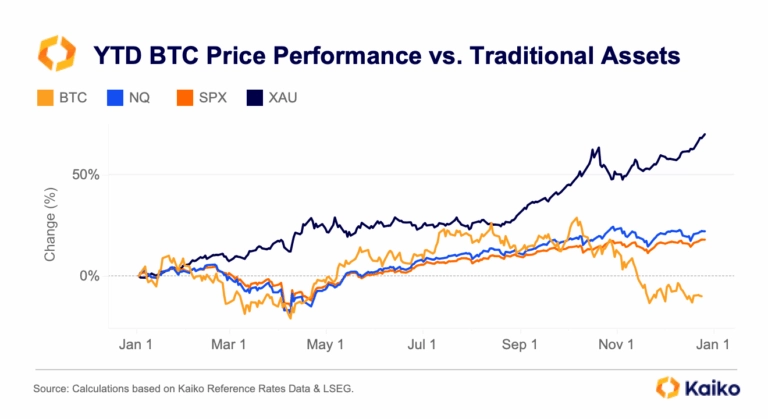Data Points
aLTCOINS PERK UP FOLLOWING CHINA STIMULUS
Altcoins have also benefited from the risk-on mood in markets over the past few weeks. As a result, most major altcoins have outperformed BTC and ETH in the past week.
This outperformance is reflected in Kaiko’s Top 15 market index, which reached its highest point since the end of July over the weekend. While BTC and ETH account for 60% of the weighting in this index, altcoins such as SOL and XRP make up 10% and 9%, respectively.
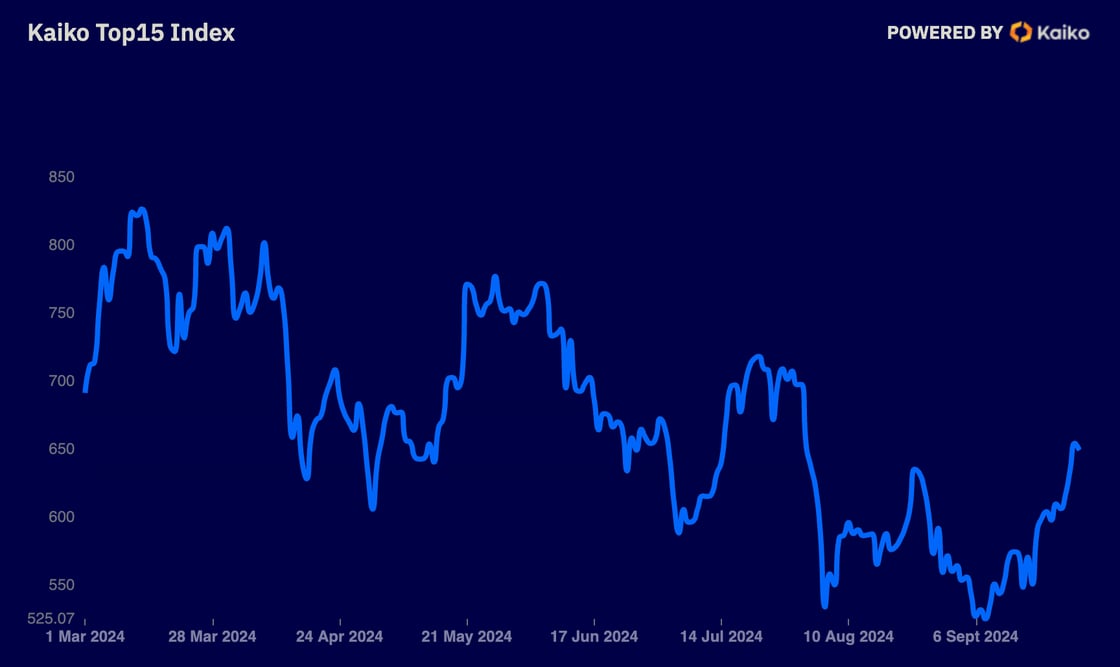
The remaining 19% of the weighting is spread across the following altcoins: LINK, DOGE, MATIC, ADA, AVAX, LTC, TRX, SHIB, DOT, BCH, and XLM.
As a result of altcoins’ improved performance, both Kaiko’s Top 10 and Top 15 indices outperformed the Top 5 index over the past seven days.
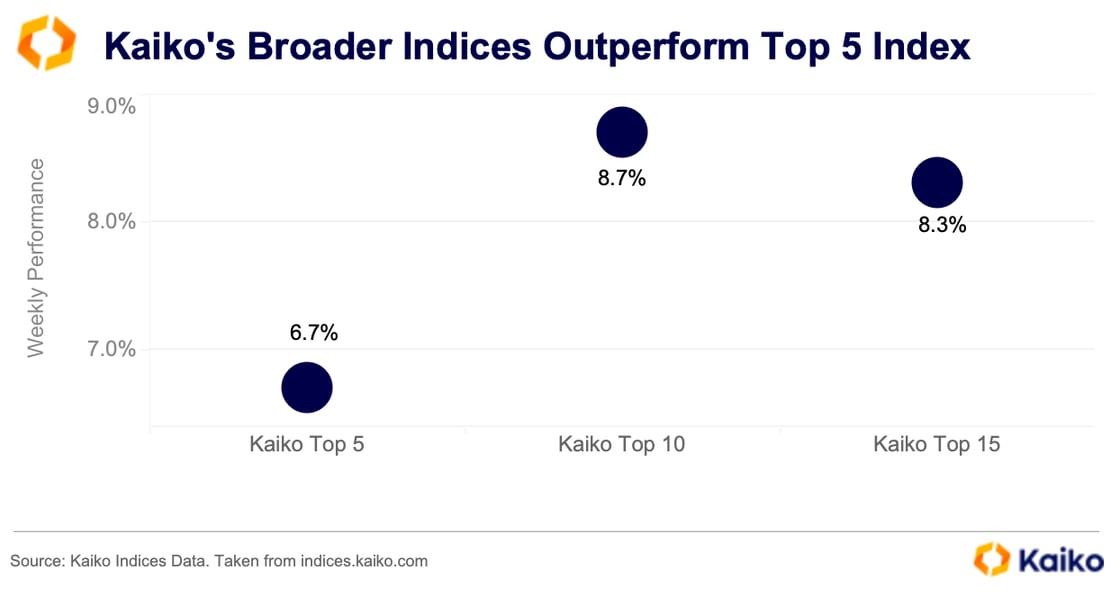
Liquidity for these tokens has yet to improve substantially, despite improving prices and market sentiment. Volumes have been flat. Apart from a spike in August—amid broader market volatility—volumes remain below July levels and well below the yearly highs seen in March.
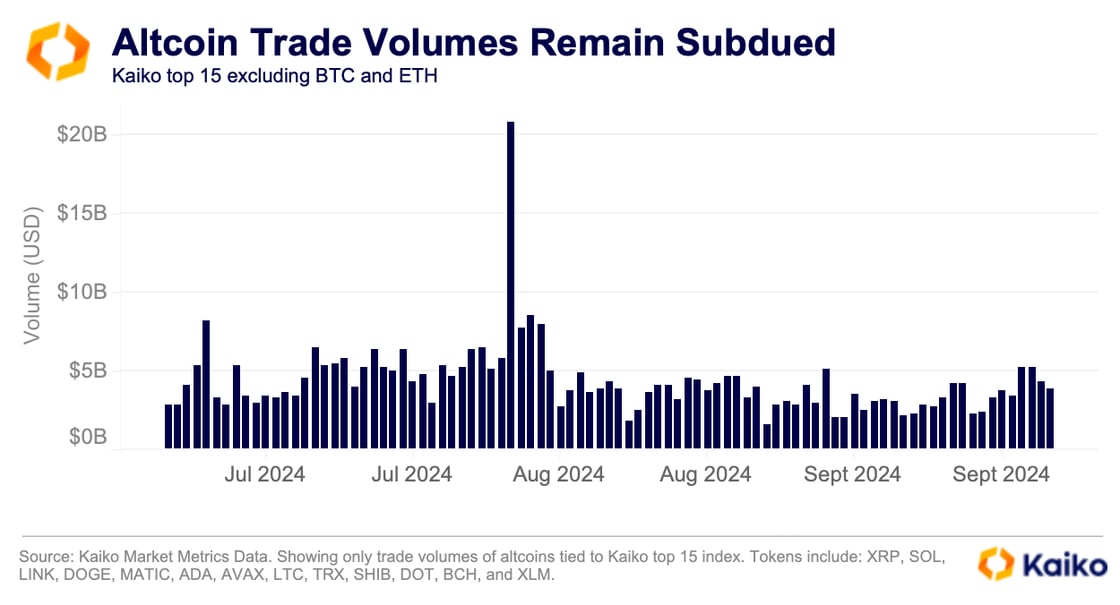
Furthermore, despite last week’s rally, the average altcoin premium on Korean exchanges has flipped into a discount, hitting its lowest level since the FTX collapse. This suggests that Korean traders may have taken profits after two months of declining prices.
Historically, such a shift often precedes a surge in buying activity and a spike in premiums. The premium is measured as the percentage difference between altcoin prices in KRW on Korean exchanges and their USD market counterparts.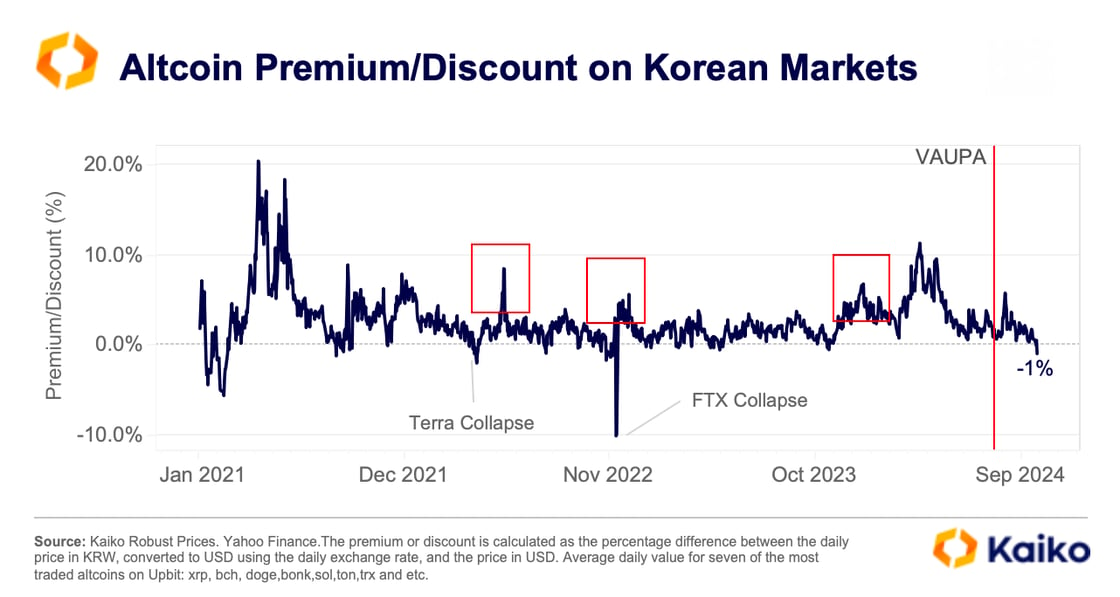
Korean traders are known for their high-risk tolerance, with the altcoin premium serving as a key indicator of demand for riskier assets. After peaking at 11% in March, the premium has steadily declined due to weakening global risk sentiment and new local crypto regulations.
In July, South Korea introduced the Virtual Asset User Protection Act (VAUPA) to safeguard users and prevent unfair practices like insider trading, contributing to a slowdown in speculative trading.
Increased demand could also come from Chinese traders following stimulus measures made last week. This could benefit altcoins in the long run, as Chinese traders are known for their high-risk tolerance.
Last week, China announced policy measures aimed at improving consumer confidence and domestic demand. The country’s investment-led growth model, driven by infrastructure and real estate, has faced challenges due to the housing crisis. Other growth drivers, like consumption, have failed to take off due to post-COVID uncertainty and worsening demographics. While past monetary policy measures haven’t reversed this trend, the positive market reaction to this latest round of stimulus shows optimism, as Chinese stocks registered their single best trading day since 2008 on Monday.
wILL bITCOIN CATCH UP TO GOLD
Bitcoin has underperformed gold in recent months, closely mirroring risk assets during the August selloff. The BTC-to-gold ratio has fallen from 33 ounces per BTC in March to 24 by last week.
Meanwhile, gold broke all-time records in nominal terms between March and August, driven largely by demand from emerging central banks. This reflects a diversification strategy away from dollar-denominated assets, offering robust support to gold prices despite a high-interest-rate environment, which typically dampens gold’s appeal.
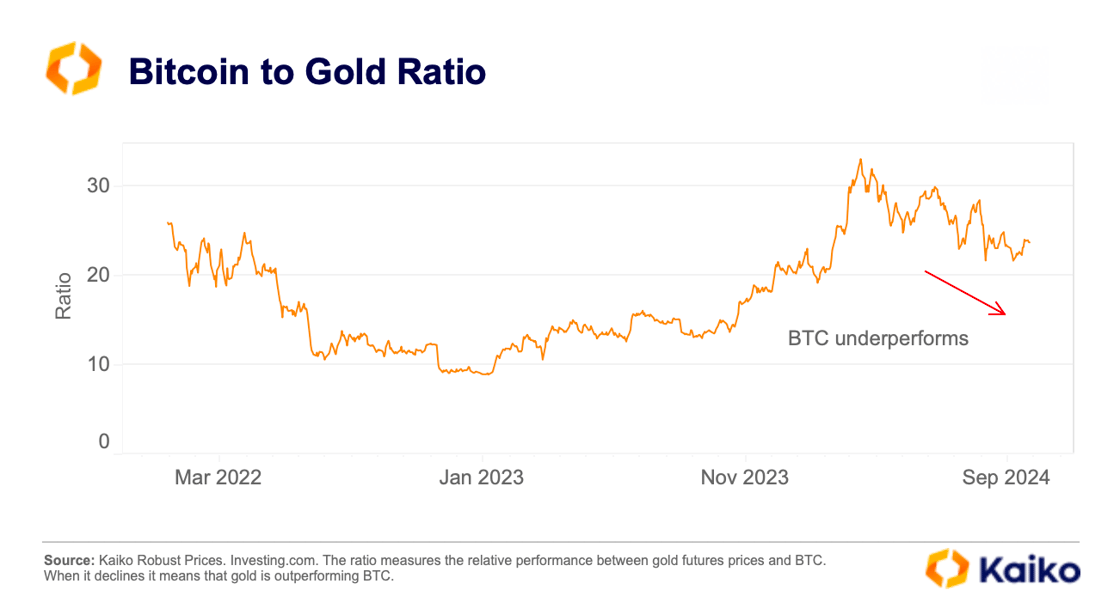
While central banks are far from considering holding Bitcoin due to its volatility, interest in BTC from corporates as a strategic treasury asset has grown. Companies like Japanese investment firm Metaplanet and U.S.-based Semler Scientific followed MicroStrategy’s lead, adding Bitcoin to their treasuries to hedge against global instability. Both firms plan to use debt to fund their BTC purchases.
The correlation between BTC and their stock prices has increased since their announcements: Metaplanet’s correlation with BTC jumped to 0.4 and Semler’s to 0.5, although both remain lower than MicroStrategy’s 0.7.
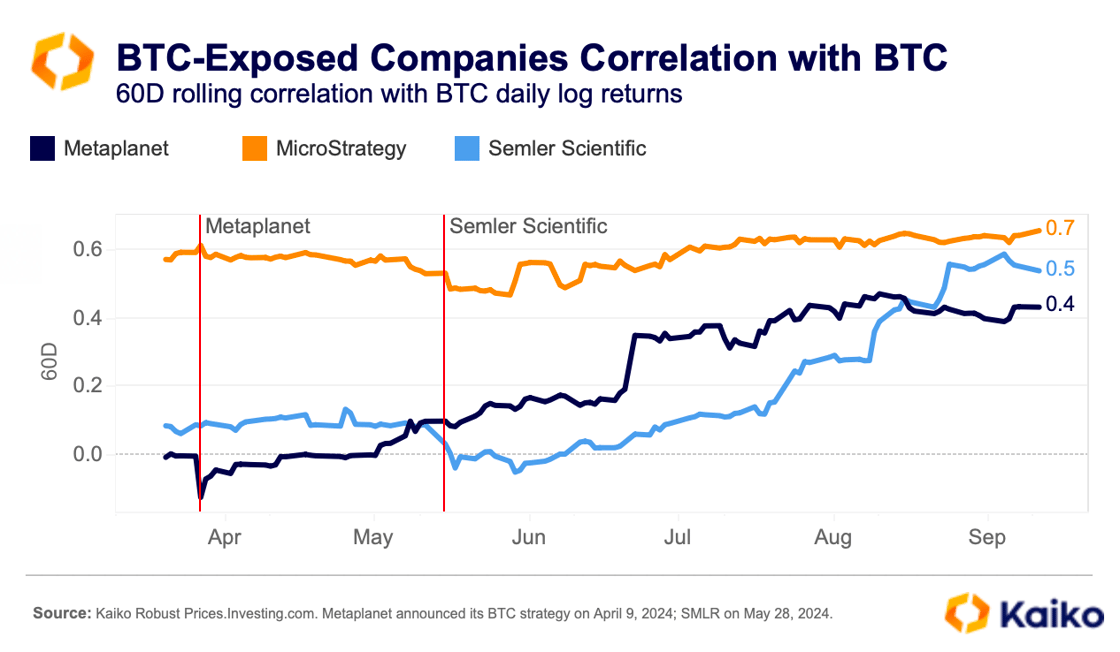
Despite the rising correlation, their price performance has diverged. Metaplanet surged by over 700% YTD, while Semler Scientific’s stock dropped by 50%.
This suggests that adding Bitcoin to a company’s balance sheet is not a guaranteed path to positive stock performance, at least in the short term. Other factors, such as company fundamentals, earnings reports, or sector-specific challenges, continue to play an important role.
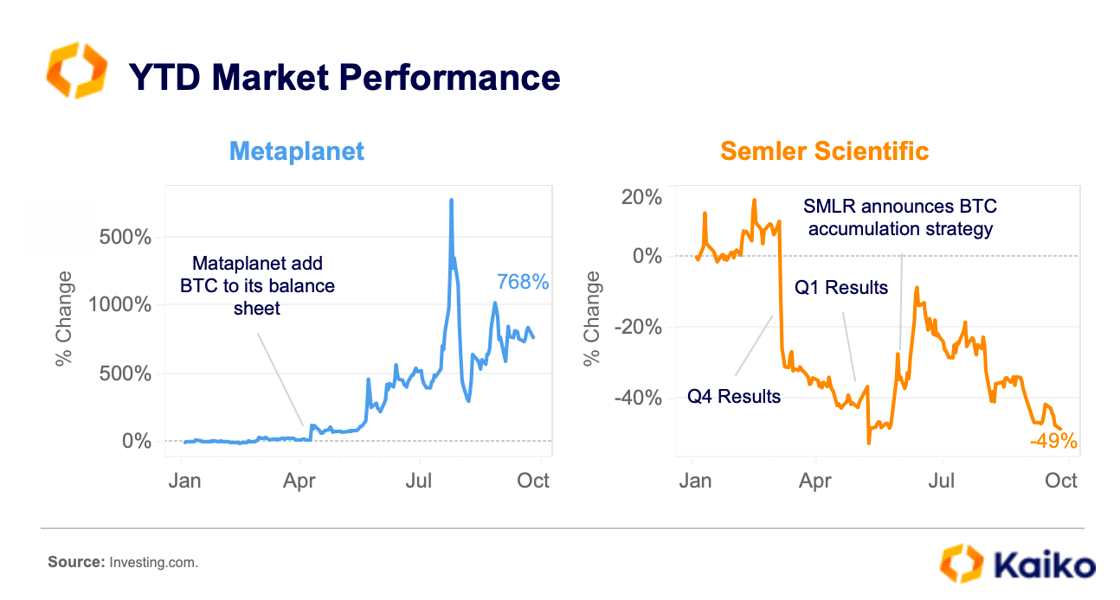
This growing interest in BTC as a treasury asset has been mirrored by increased demand from some governments and could represent a new structural bid akin to central banks’ demand for gold. Since April, Metaplanet has acquired 38,464 BTC, increasing its holdings during market selloffs, while Semler currently holds 1,012 BTC.
wluna price consolidation
The price of LUNA Classic, the native token of the defunct Terra ecosystem, and its wrapped version, WLUNA, converged over the past month. Traders were able to arbitrage the price difference between the two tokens after Terraform Labs opened its Shuttle Bridge interface on August 28th, which facilitates swaps between LUNA Classic and WLUNA.
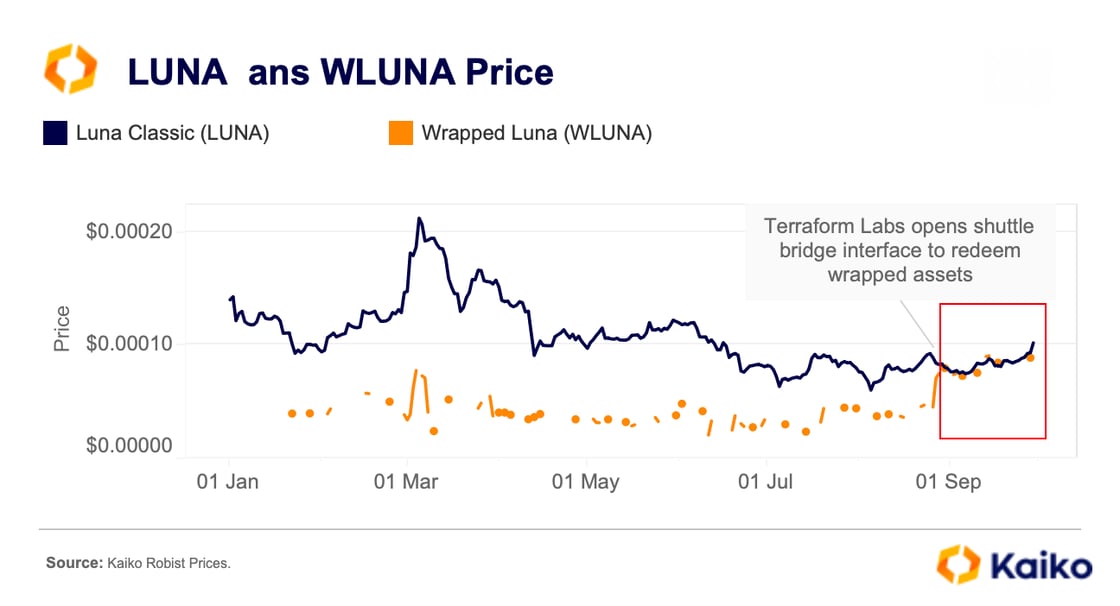
The bridge will close at the end of October, when the token issuer, Terraform Labs, is expected to wind down its business to qualify for Chapter 11 bankruptcy protection in the US.
While LUNA Classic continues to trade on dozens of centralized exchanges, WLUNA was delisted from most platforms after the collapse of the Terra ecosystem and is currently only traded on Uniswap. It is extremely illiquid, with daily volumes averaging just $1-2K.


![]()
![]()
![]()
![]()




